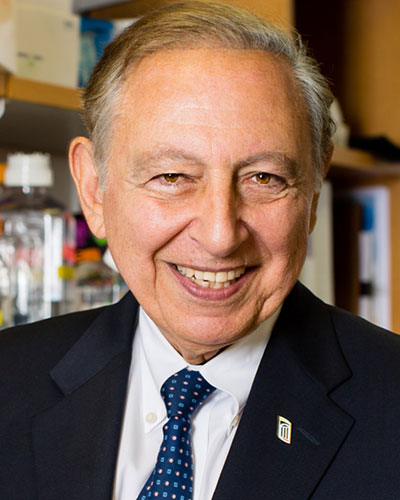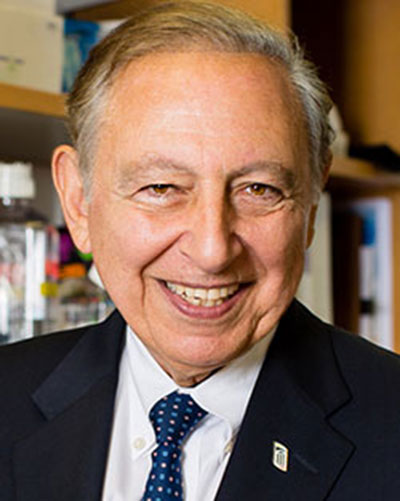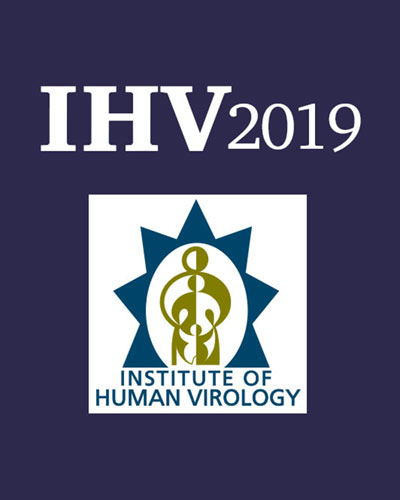July 25, 2022

World Leaders in Science, Healthcare, Academia, Business, and Government Discuss Issues and Ramifications of Long COVID
Last Thursday concluded a two-day gathering on the ‘Science of Long COVID’, which was hosted at the University of Maryland, Baltimore. The conference was led by the Global Virus Network (GVN), a coalition of world leading medical virology research centers co-founded by Robert C. Gallo, MD, The Homer & Martha Gudelsky Distinguished Professor in Medicine and Co-Founder and Director of the Institute of Human Virology at the University of Maryland School of Medicine. Dr. Gallo is also the Scientific Chair of the GVN. The first-of-its-kind conference reviewed the wealth of cohort data on long COVID, constructed a framework to characterize and define the conditions, and identified the most critical and urgent areas of research needed to better understand, diagnose, and treat this developing public health crisis.
“There is no doubt that long COVID has proven to be as nightmarish as we feared, but what we heard over the past two days reassured us that our colleagues from the global scientific community are ready to come together to rise to the challenge. To do that effectively, the scientists of the GVN and those who participated in the conference call upon governments, foundations, and other institutions worldwide to commit the billions of research dollars required to address the catastrophe of long COVID,” said Prof. Christian Bréchot, MD, PhD, GVN President and Associate Vice President for International Partnerships and Innovation at the University of South Florida.
Across the globe, nearly half of COVID-19 survivors struggle with persistent symptoms four months or more after diagnosis and are colloquially referred to as long COVID or long haulers. Conference speakers from around the world focused on the vast public health implications of this highly prevalent condition. During the proceedings, they outlined approaches to and research of this complex phenomenon that has already cost Americans alone an estimated $50 billion annually in lost income, a data point that could translate to $200 billion or more of lost income around the globe.
“The prevalence of long COVID is staggering,” said Dr. Gallo. “Two years into the pandemic, we have concrete and irrefutable proof from cohort studies following individuals as they experience a litany of symptoms—memory problems, relentless fatigue, difficulty breathing, cardiac concerns, insomnia and more. What we lacked, and what this conference achieved, is a data-driven and scientific baseline that helps scientific, policymaking and healthcare stakeholders to understand and approach the underlying aspects of long COVID and consequently arrive at a global research framework.”
As part of the process to establish a global research framework, the conference presented key scientific and clinical evidence on long COVID’s far-ranging global impact:
- 243 million long COVID cases worldwide with a disproportionate burden affecting females (49% versus 37% for men); continental differences (Asia 51% of COVID cases becoming long COVID, Europe 44%, U.S. 31%); and lasting elevated risk levels among long COVID survivors for cardiovascular disease and diabetes.
- Striking clinical parallels exist between “COVID-fog” and “chemo-fog,” with the whole-body inflammation in both causing changes to brain circuitry and cognitive impairment. Different cytokines—immune hormones that affect immune and other cells—may be promising biomarkers, and even therapeutic targets, to measure long COVID’s effects in the body and ameliorate long COVID disease.
- Thirty-to-fifty percent of long haulers report breathlessness and 10-20% report cough. More severe lingering effects of long COVID on the respiratory system include damage and scarring of lung tissue. These changes are not necessarily predicted by the severity of the disease or whether a patient was hospitalized. Vaccination has reduced the numbers of individuals with long COVID respiratory disease, while new COVID variants show milder effects.
- Risk factors for long COVID include Type 2 Diabetes, SARS-CoV-2 RNAemia, Epstein-Barr virus viremia, microclots, protein misfolding, and both pre-existing and disease-specific autoimmunity. These associations are most detectable at the time of diagnosis, emphasizing the need for early disease measurements to advance understanding.
“Despite the fact that enormous numbers of people are suffering from persistent symptoms after recovering from Covid, it’s been very difficult to define a syndrome to even start to consider how to make a difference. The conference was a great chance to bring together scientists and clinicians to brainstorm about the best future approaches, “said Eric Rubin, MD, PhD, Editor in Chief, New England Journal of Medicine and Adjunct Professor of Immunology and Infectious Diseases, Harvard T.H. Chan School of Public Health.
The GVN is committed to fostering true collaboration among virologists, medical specialists, governments, and non-governmental organizations alike to combat long COVID’s critical threat to international health. The conference wrapped up with a call to action for governments and funding agencies to allocate resources to strengthen scientific training and response mechanisms across these priority focus areas:
- Conduct large scale data analysis on existing cohort studies. Bring the scientific community together to share insights and use artificial intelligence to advance understanding.
- Acknowledge the effect of time. Research cannot be relegated to studying the effects of ancestral strains of the virus prior to the availability of vaccines. We need diverse samples from patients infected by all subvariants, segmented by whether or not they were vaccinated and whether or not they had prior infection.
- Transition to interventional clinical trials. A substantial amount of observational data exists on long COVID, documenting an effect on different organ systems in varying degrees of severity for a range of times. We now must move to understand the risks and benefits of treatment within those ranges of time and the best biomarkers to track them. We will need innovative trial designs to move swiftly from early phase studies to large scale clinical trials.
- Linkage of people living with Long COVID to research activities. We recognize the desperation and frustration of people living with Long COVID and echo their calls for urgent investment in scientific and clinical research so that we can inform the design of much-needed clinical services, identify better diagnostic tests as well as optimal models of care, and discover treatment options for Long COVID.
The GVN and the leads of its long COVID Task Force agree that long COVID is an opportunity to create a cohesive, global public health response unlike any other historical effort. To better arm policymakers and decision-makers in prioritizing funding for research and interventions, we’ve mapped out in a clinical framework assessing how the virus preys on pre-existing conditions and interacts with our biological mechanisms, resulting in clinical manifestations. More than 243 million people worldwide have or had long COVID. The scientific pursuit of solutions will require adequate funding and a continued commitment to information sharing, which is why the GVN commits to convening regular global conferences to continue this urgent discussion.
About the Institute of Human Virology
Formed in 1996 as a partnership between the State of Maryland, the City of Baltimore, the University System of Maryland, and the University of Maryland Medical System, the IHV is an institute of the University of Maryland School of Medicine and is home to some of the most globally-recognized and world-renowned experts in all of virology. The IHV combines the disciplines of basic research, epidemiology, and clinical research in a concerted effort to speed the discovery of diagnostics and therapeutics for a wide variety of chronic and deadly viral and immune disorders, most notably HIV, the virus that causes AIDS. For more information, visit ihv.org and follow us on Twitter @IHVmaryland.
About the Global Virus Network (GVN)
The Global Virus Network (GVN) is essential and critical in the preparedness, defense and first research response to emerging, existing and unidentified viruses that pose a clear and present threat to public health, working in close coordination with established national and international institutions. It is a coalition comprised of eminent human and animal virologists from 69 Centers of Excellence and 11 Affiliates in 37 countries worldwide, working collaboratively to train the next generation, advance knowledge about how to identify and diagnose pandemic viruses, mitigate and control how such viruses spread and make us sick, as well as develop drugs, vaccines, and treatments to combat them.
No single institution in the world has expertise in all viral areas other than the GVN, which brings together the finest medical virologists to leverage their individual expertise and coalesce global teams of specialists on the scientific challenges, issues and problems posed by pandemic viruses. The GVN is a non-profit 501(c)(3) organization. For more information, please visit www.gvn.org. Follow us on Twitter @GlobalVirusNews
About the University of Maryland School of Medicine
Now in its third century, the University of Maryland School of Medicine was chartered in 1807 as the first public medical school in the United States. It continues today as one of the fastest growing, top-tier biomedical research enterprises in the world -- with 46 academic departments, centers, institutes, and programs, and a faculty of more than 3,000 physicians, scientists, and allied health professionals, including members of the National Academy of Medicine and the National Academy of Sciences, and a distinguished two-time winner of the Albert E. Lasker Award in Medical Research. With an operating budget of more than $1.3 billion, the School of Medicine works closely in partnership with the University of Maryland Medical Center and Medical System to provide research-intensive, academic and clinically based care for nearly 2 million patients each year. The School of Medicine has nearly $600 million in extramural funding, with most of its academic departments highly ranked among all medical schools in the nation in research funding. As one of the seven professional schools that make up the University of Maryland, Baltimore campus, the School of Medicine has a total population of nearly 9,000 faculty and staff, including 2,500 students, trainees, residents, and fellows. The combined School of Medicine and Medical System (“University of Maryland Medicine”) has an annual budget of over $6 billion and an economic impact of nearly $20 billion on the state and local community. The School of Medicine, which ranks as the 8th highest among public medical schools in research productivity (according to the Association of American Medical Colleges profile) is an innovator in translational medicine, with 606 active patents and 52 start-up companies. In the latest U.S. News & World Report ranking of the Best Medical Schools, published in 2021, the UM School of Medicine is ranked #9 among the 92 public medical schools in the U.S., and in the top 15 percent (#27) of all 192 public and private U.S. medical schools. The School of Medicine works locally, nationally, and globally, with research and treatment facilities in 36 countries around the world. Visit medschool.umaryland.edu
Contact
Institute of Human Virology
Jennifer Gonzales
Public Relations & Communications Manager
jennifer.gonzales@ihv.umaryland.edu
Related stories

Tuesday, April 05, 2022
UM School Of Medicine Institute of Human Virology’s Robert Gallo Receives Distinguished Alumni Award by the University of Chicago Medical Association
Robert Gallo, MD, The Homer & Martha Gudelsky Distinguished Professor in Medicine, Co-Founder and Director of the Institute Human Virology at the University of Maryland School of Medicine and Co-Founder and Chair of the Scientific Leadership Board of the Global Virus Network, was awarded the Distinguished Alumni Award by the University of Chicago Medical & Biological Sciences Alumni Association (UChicago MBSAA) for his lifetime achievements. Honorees will participate in a panel discussion on May 10 and will be presented the award on May 21 at the Hyde Parke campus.

Friday, October 04, 2019
Institute of Human Virology Hosts 21st Annual International Meeting of Top Scientists on Ending the HIV/AIDS Epidemic in America and the Intersection of Opioid Use Disorder
The Institute of Human Virology (IHV) at the University of Maryland School of Medicine commenced IHV2019 held Thursday, October 3 through Friday, October 4 at the Four Seasons Hotel in Baltimore, Maryland. This year “Progress in HIV/AIDS: Challenges in 2020” opened with highlights about the recent plan for "Ending the HIV Epidemic by 2030” with expert opinions by ADM Brett Giroir, MD, Assistant Secretary for Health at the U.S. Department of Health and Human Services (HHS)
